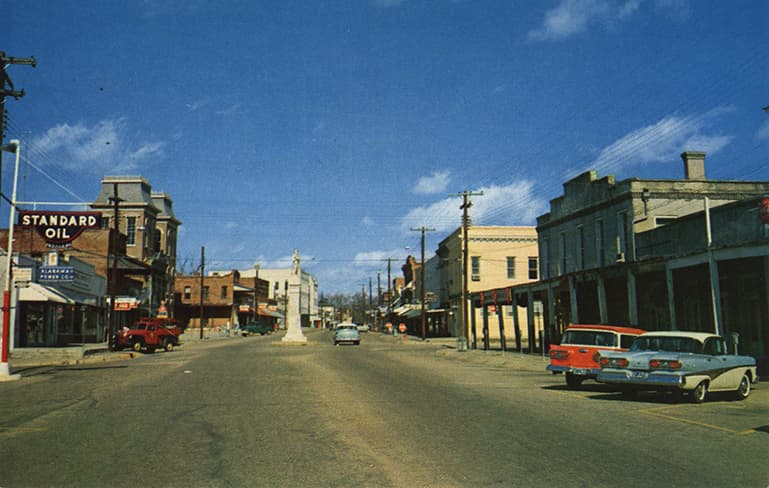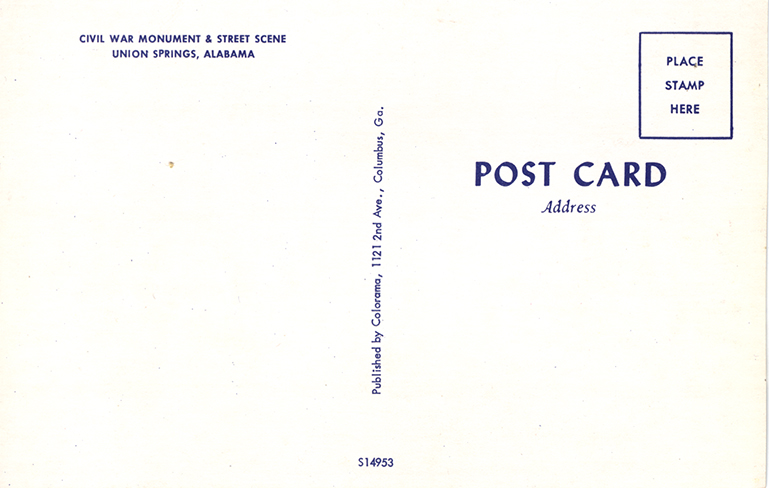Southeast Alabama Streets
Historical Streets of Southeast Alabama as displayed through the Traveling Exhibits
Postcards showcased on the Traveling Exhibits
Dothan - Main Street
In the 1830s, lumbermen from Georgia established the first permanent settlement at Poplar Head Spring. In the late 1870s, Poplar Head appealed to the government for a post office but discovered the name was already taken. A local minister suggested Dothan in honor of a small village mentioned in the Bible. The name was approved and the town was incorporated in 1885. The coming of the railroad transformed Dothan into the commercial center of Henry County. In 1903, the Alabama legislature created Houston County as the 67th and last county incorporated in Alabama and made Dothan the county seat. This postcard shows the courthouse and business district in the 1930s.
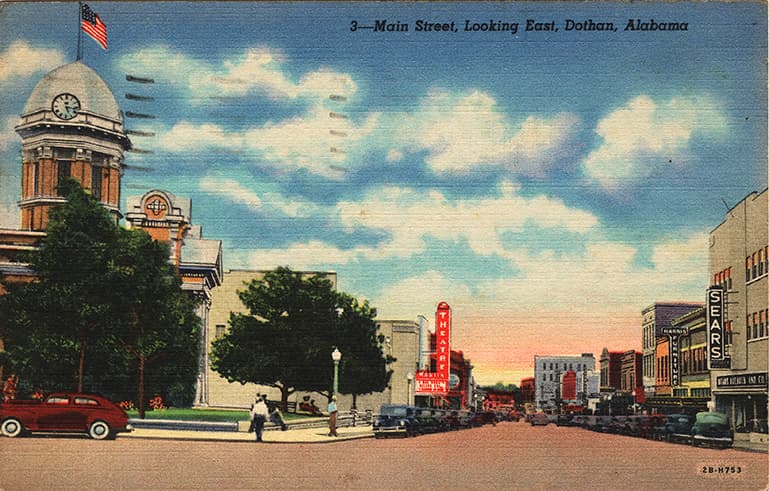
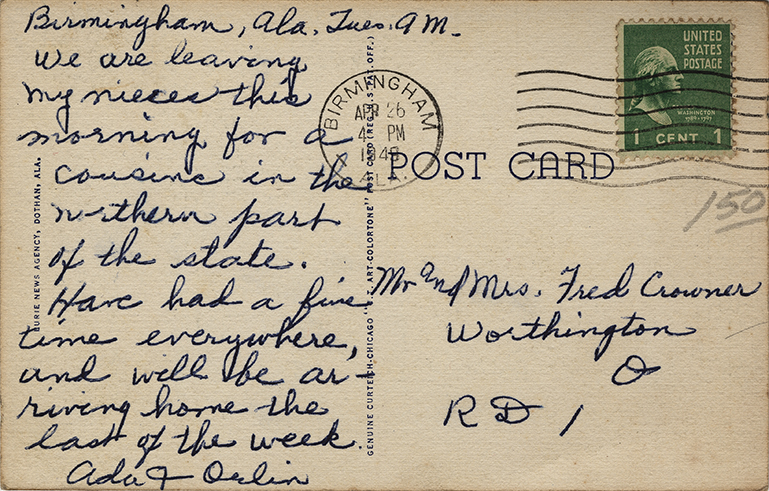
Transcription
Birmingham, Ala. Tues. am. We are leaving my nieces this morning for a cousins in the northern part of the state. Have had a fine time everywhere, and will be arriving home the last of the week. Ada & Orlin Addressed to: Mr. & Mrs. Fred Crowner Worthington O RD 1
Enterprise - Carmichael Street
Enterprise is located in Coffee County. It was founded by John Henry Carmichael, who moved to the area in 1881 and opened a store. It was officially incorporated as Enterprise in 1896. In 1915, the town and neighboring community was threatened by the boll weevil which wreaked havoc on the cotton crop. This postcard, from the early 1920s, shows the Boll Weevil Monument, which stands in the center of the downtown district. The monument was dedicated on December 11, 1919, to acknowledge the role played by the pest in forcing diversification of the region's economy. It is the only monument to a pest in the United States.
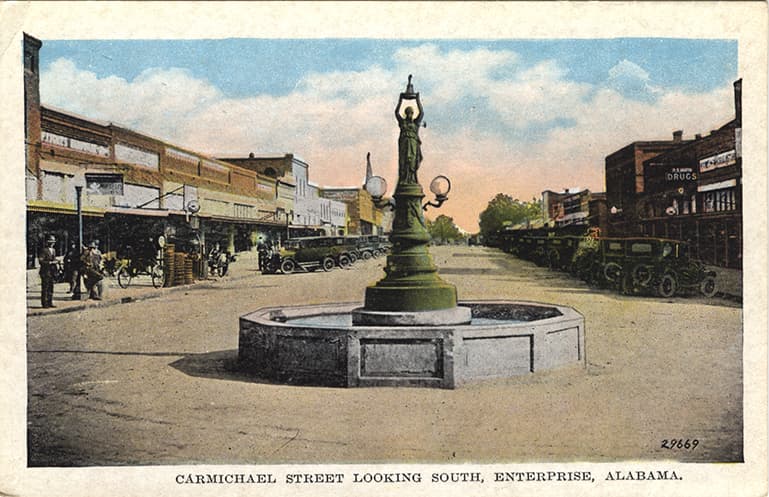
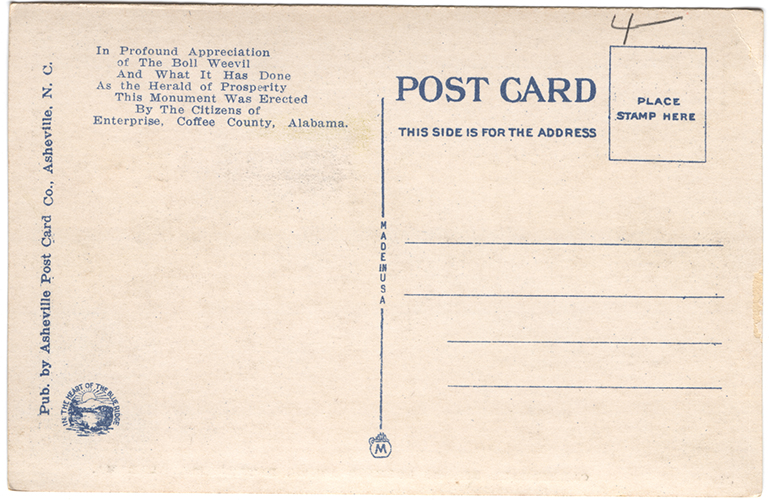
Eufaula - Eufaula Street
Eufaula is located in Barbour County adjacent to the Georgia border. In 1816, white settlers from Georgia established a permanent settlement on the high bluffs above the Chattahoochee River. They adopted the Creek village name of Eufaula. Because of Gen. William Irwin's efforts to promote the area's development, the town was renamed Irwinton in 1832. However, in 1843, the town reinstated its original name to end postal confusion ensuing from its proximity to Irwinton, Georgia. Eufaula Street was one of the original streets laid out in 1832.
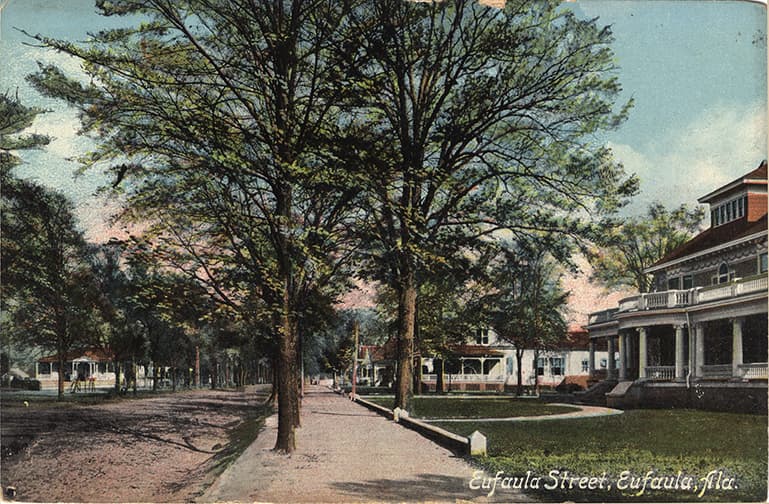
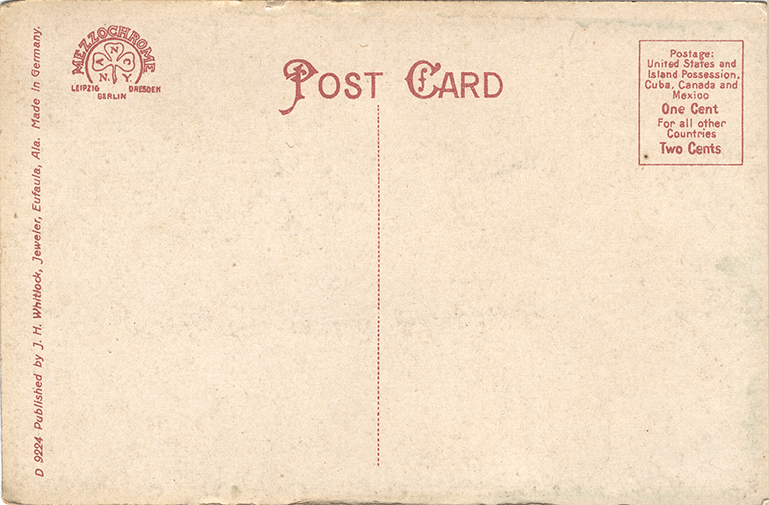
Luverne - Main Street
Luverne was named after Luverne LeGrand, wife of M. P. LeGrand, one of its founders. In 1886, the Montgomery and Florida Railroad company began purchasing land in Crenshaw County for a right-of-way for its railroad. It was anticipated that this railroad would terminate in the county seat of Rutledge. However, based on the efforts of Luverne's founding fathers, the railroad was rerouted. In 1889, the town of Luverne was incorporated with the intention of becoming the terminus of the railroad. The new station was a success and Luverne grew. In 1893, the citizens of Crenshaw County voted to move the county seat to Luverne. This is a postcard of the downtown business district in the 1930s.
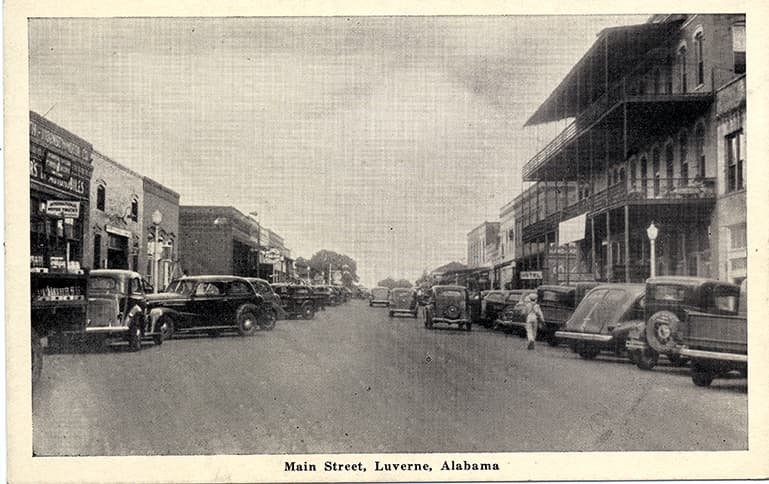
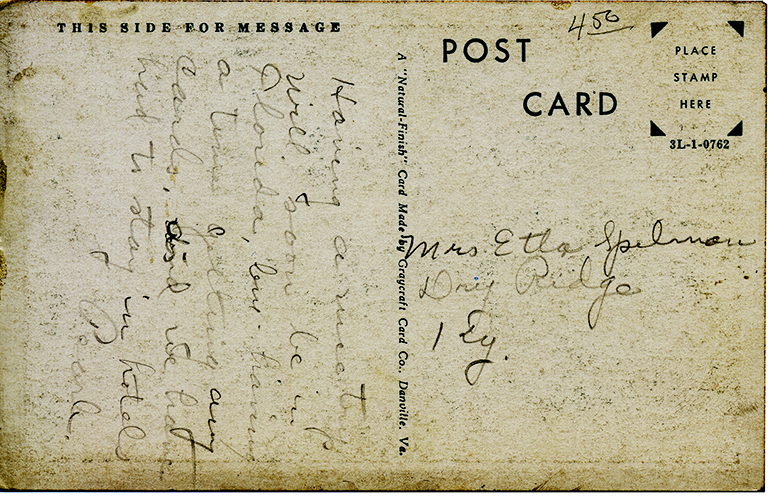
Transcription
Having a nice trip. Will soon be in Florida, I'm having a time getting any cards, and we have had to stay in hotels. Pearle Addressed to: Mrs. Etta Spelman Dry Ridge Ky.
Ozark - Business Section
Ozark is the county seat of Dale County. The first known settler was John Merrick, Sr. in 1822 and the town which developed was named Merricks in his honor. In 1843, the town's name was changed to Woodshop in honor of an important local woodworking business. The final name change came in the mid-1850s after a traveler visited and was reminded of the Ozark Mountains in Arkansas. Ozark was incorporated as a town in 1870. Agriculture remained the most important segment of Ozark's economy until the World War II establishment of Camp Rucker, now called Fort Rucker. This postcard illustrates part of the business district in the 1930s.
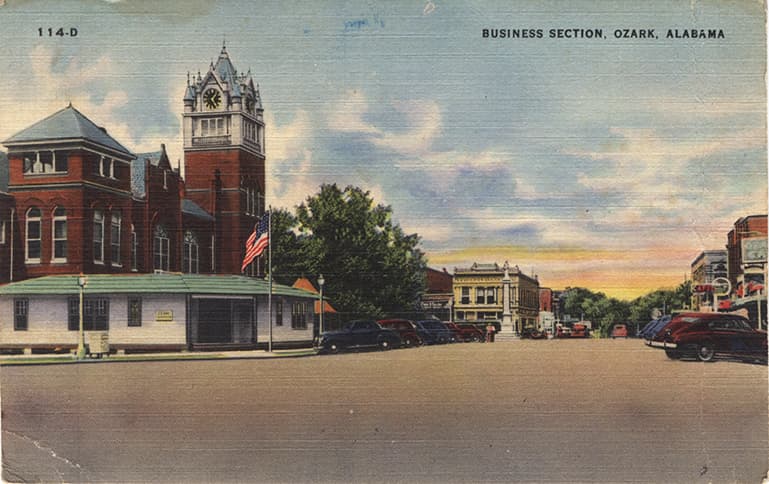
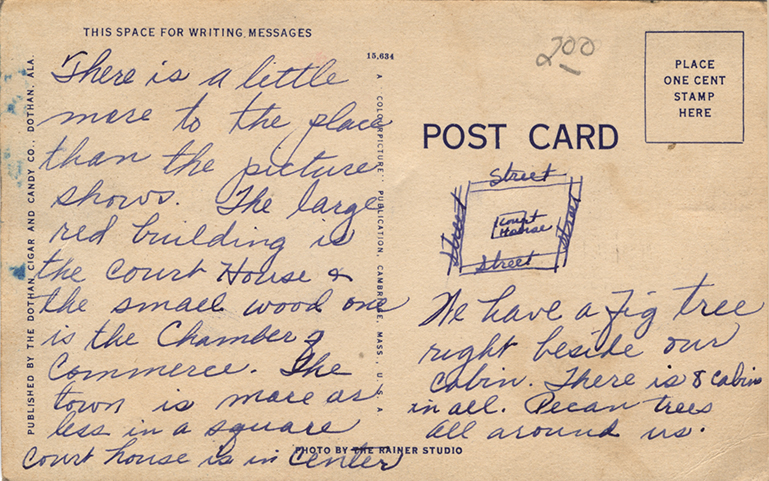
Transcription
There is a little more to the place than the picture shows. The large red building is the court house & the small wood one is the Chamber of Commerce. The town is more or less in a square court house is in center We have a fig tree right beside our cabin. There is 8 cabins in all. Pecan trees all around us.
Troy - Street Scene
Troy was first settled in the early 1830s and known as Deer Stand Hill. The town was also known as Zebulon and Centreville. In 1838, two residents of the area gave land to Pike County so the county seat would be moved here from Monticello. This area was first called Troy in a deed for the sale of a lot on this land dated October 9, 1838. Troy was incorporated in 1843 and the town's limits were established a quarter of a mile in every direction from Troy's courthouse square. This postcard shows that square in the 1870s.
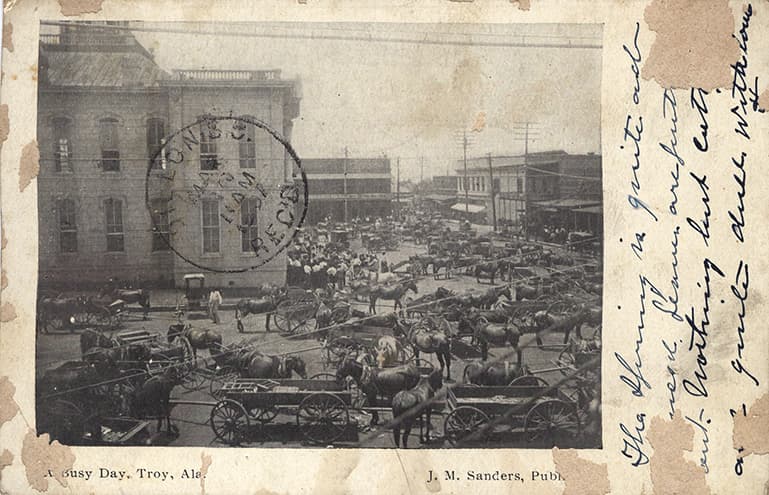
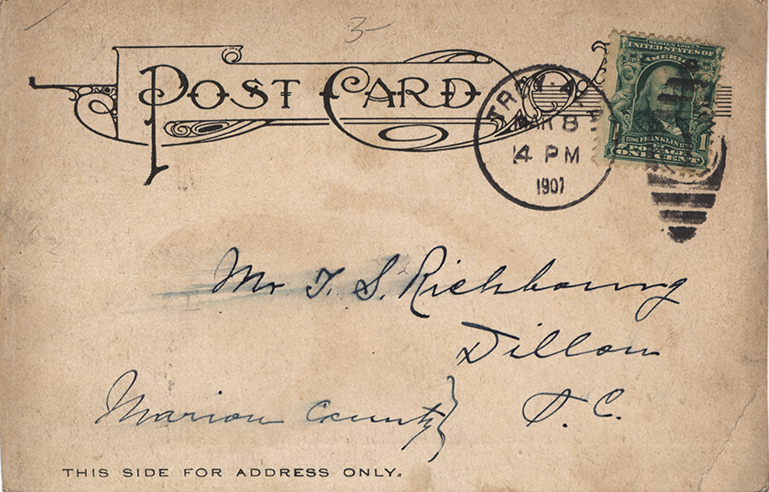
Transcription
[Illegible] Addressed to: Mr T.S. Richbourg, Dillon, Marion County, S.C.
Troy - North Three Notch Street
Three Notch Street in Troy was originally a Creek hunting trail. The trail was made into a road in 1824 to move supplies from Pensacola, Florida to Fort Mitchell, Alabama. This road helped open the area to settlers, but Troy's greatest growth took place in the 1870s when the railroad was extended from Columbus, Georgia, to Troy. Another factor in Troy's growth was the establishment of a state teacher's college in 1887; the school later became Troy University.
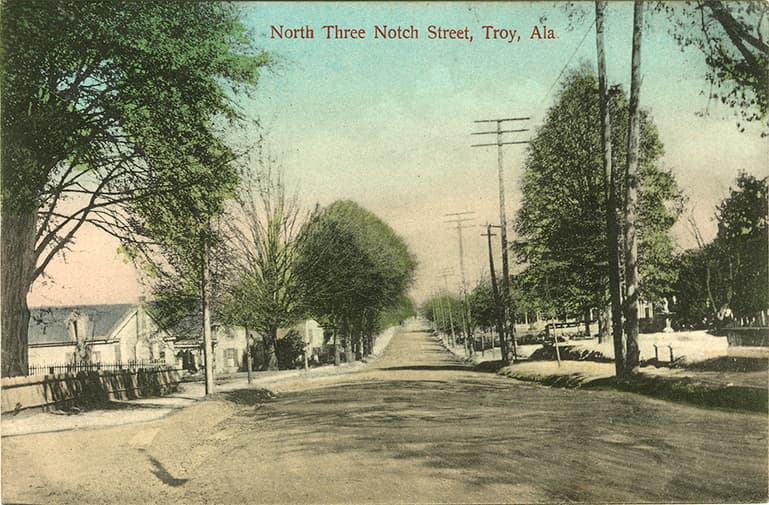
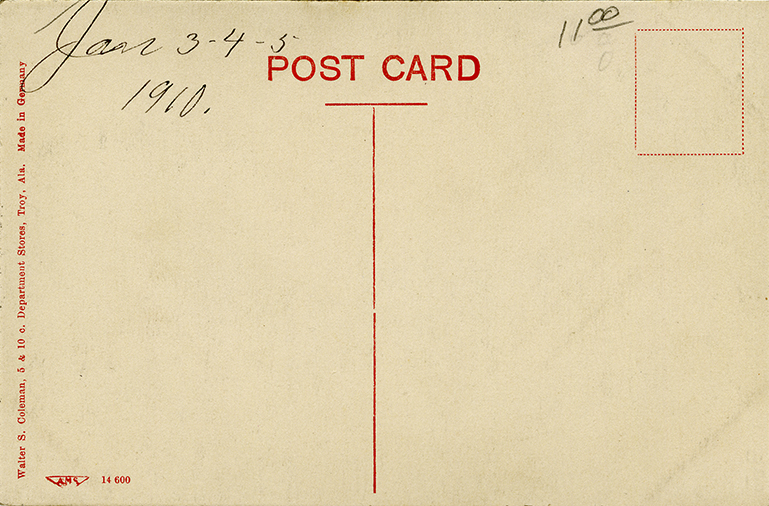
Transcription
Jan. 3-4-5 1910.
Union Springs - Street Scene
The first white settlers arrived in the Union Springs area in the 1830s. They gave the town its name because of the 27 springs flowing from the nearby Chunnenuggee Ridge. Union Springs was officially incorporated in 1844, as part of Macon County. When Bullock County was created in 1866, voters chose Union Springs as the county seat. This postcard shows the business district in the 1950s and the Confederate Soldiers Memorial that used to stand on Prairie Street.
